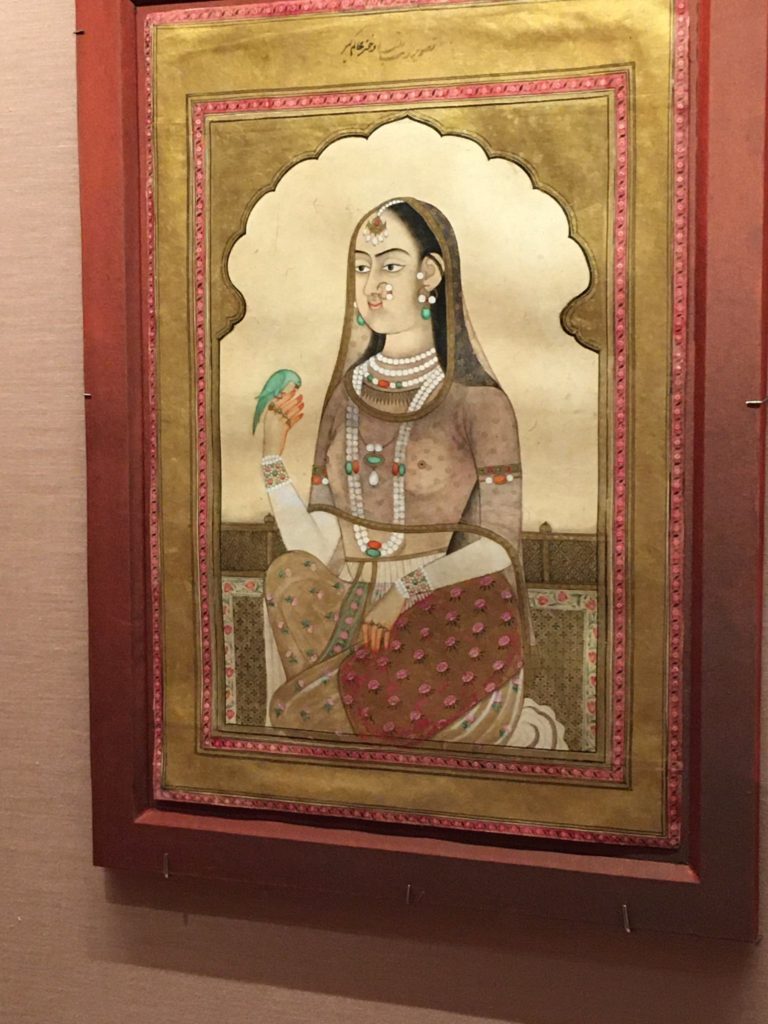
Script for the Youtube Video:

Script for the Youtube Video:
Note: This post first appeared on Internet Stuff. You can read it here.

Posted by Peter Nemetz.
I watched a few episodes of Ertugrul and it’s pretty good. I would prefer less of a Marvel-comics style character…Ertugrul and his alps basically are just killing machines who never get injured while taking down dozens of Christian knights. But it is good for what it intends to be, a dramatic rendering of the origins of the Ottoman mythology.
What’s the Indian equivalent? I assume a Shijavi TV series, but is there something with good production values?
Sarah Haider, Shadi Hamid, myself and Murtaza Hussain recorded an impromptu podcast that we titled the “Intellectual Brown Web.” These are basically people I know well (I am good friends with both Sarah and Shadi) or who got involved in Twitter threads repeatedly (Murtaza). But there is no “Hindo-origin person.” Since I don’t give a shit about representation or affirmative action I don’t care too much…but this got me thinking, what based Hindu Americans would you have on? I know plenty of based Hindus from India…but most Hindu Indian Americans are Rho Khanna at the most based.
I mean think about this: why the fuck am I having to write long pieces about how the anti-caste discrimination stuff is bullshit? I’m just a tech entrepreneur who isn’t even from a Hindu background. Suhag at HAF does stuff and others, but where are the big hitters? Instead you have public Hindu Americans proudly pushing this stuff.
Note: there are plenty of based Hindu Americans who are doctors, engineers and business people. They just aren’t public people. Which is fine, but if you don’t speak for yourself, at some point Razib Khan is going to get tired of doing so.
Every nationality or cultural group should have a song done like this. I’m writing a Substack on Vikings, who were quite nasty in many ways, but popular culture songs like this make them seem “bad ass.”

I don’t have a big personal issue with vegetarians, though I really enjoy ribeye and you’ll take shrimp from my dead hands. My daughter has been a vegetarian since she was five due to ethical concerns about animal cruelty.
But every now and then I hear that BJP-aligned governments or officials are removing eggs from school meal programs due to cultural sensitivities. I get that, but is there a good argument from this from a utilitarian/nutritional angle? Children at critical ages need protein and fat, and perhaps I’m wrong, but India still seems to have a lot of nutritional issues in a lot of is population. These kids are the future, and honestly, this seems like the cultural forces are shooting society in the face.
If Marin county or the Irvine School District unveiled this I wouldn’t care. With enough money and care you can design a vegan diet with balance and supplementation to be healthy. But this requires care and execution, and I see many American with lots of money who don’t pull it off well judging by their physique and fatigue.
What’s the deal? It’s true that the Chinese eat everything, but sometimes I wonder if the Indians eat nothing.
(this matters to all of us because a massive number of working age people in the next few decade are going to be Indian, and we need them to be as healthy as possible)
One of the things that has saddened and frustrated me on this weblog over the last 12 years has been the tendency of brown people, Indian subcontinentals, South Asians, etc. to engage in differentiation. As a geneticist, I am aware of differences, and I accept and admit it candidly to an extent that is rare in an open manner in the West. Also, some ribbing and joking is normal, and I am not offended.
But Pakistanis vs. Indians, Southies vs. Northies, Bangladeshis vs. Indians. High caste vs. low caste, vegetarian vs. non-vegetarian.
Our cultural differences are striking. Our diversity of form, belief and practice is mind-blogging. But we come from the same roots. The rest of the world looks at us, and recognizes the kinship. We? Not so much. Muslims claim Arab or Iranian heritage. Jats and northwest Indians distinguish themselves from the lower and dark races. Southerners express contempt for the barbarism of BIMARU. BIMARU claims that they are the font of culture. And so forth.
This is not to end with a resounding assertion. But sometimes, I wonder if the silent majority is not like this, and we hear the prattling of the minority?

One of the problems with “traditional” familial and cultural systems is the level of depravity they can mask. This is not a “slam dunk” argument against them, but it is a real thing. The suppression of the evidence of clear sexual abuse in a certain community in the UK in the service of preventing negative stereotypes seems to be a case where the lives and misery of young girls in these communities are not accounted for in the same way as those from more mainstream subcultures. You can see exactly how Rotherham happened, though in that case, the girls targeted were explicit outgroups.
(this not even an explicitly communal point, as Hindu women have routinely complained about the “perverted uncle” problem in joint-families)
Truss learns the hard way that Britain isn’t America:
If anti-Americanism was bad, look what its opposite has done. Britain is in trouble because its elite is so engrossed with the US as to confuse it for their own nation. The UK does not issue the world’s reserve currency. It does not have near-limitless demand for its sovereign debt. It can’t, as US Republicans sometimes do, cut taxes on the hunch that lawmakers of the future will trim public spending. Reaganism was a good idea. Reaganism without the dollar isn’t. If UK premier Liz Truss has a programme, though, that is its four-word expression.
So much of what Britain has done and thought in recent years makes sense if you assume it is a country of 330mn people with $20tn annual output. The idea that it could ever look the EU in the eye as an adversarial negotiator, for instance. Or the decision to grow picky about Chinese inward investment at the same time as forfeiting the European market. Or the bet that Washington was going to entertain a meaningful bilateral trade deal. Superpowers get to behave with such presumption.
(if you go to google news, look up the piece, and use incognito mode, you should be able to read it for free)
This is basically what Ed West told me in our podcast. Britain has been culturally swallowed by America and American affairs, and that’s not good for the UK’s social and economic development because the natives don’t pay enough attention to their real station and situation in the world.
For the Right: they need to get over Empire and Britain’s role in the world. Contra James bond they’re a medium-sized nation living off a history of geopolitical relevance. For the Left: get over colonialism. The ghosts of Ninevah haunt the old ruins.